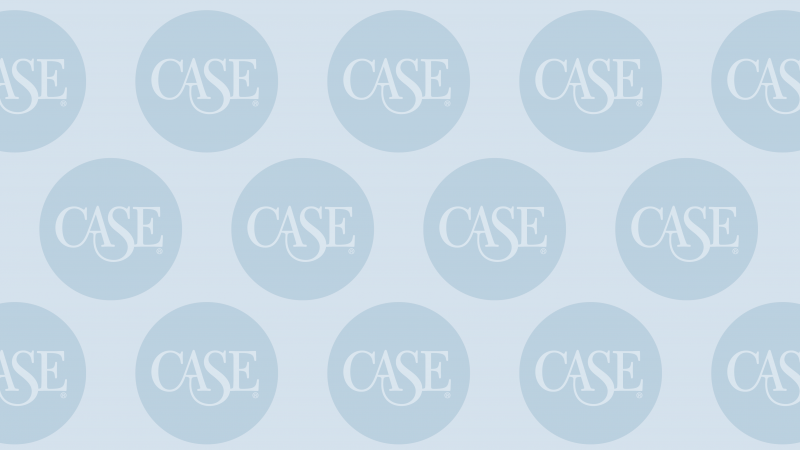
How to Embrace your School’s History and Tell a Compelling Story
In the fall of 1986, Walter Palmer’s life as a Dartmouth College student began—like generations of students before him—with a trek into the woods.
Palmer and his new classmates headed to Mount Moosilauke, 40 miles from the Hanover, New Hampshire, U.S., campus. They hiked through the pines, swapped stories, and sang songs at the Moosilauke Ravine Lodge—all part of one of the college’s time-honored traditions. The Dartmouth Outing Club’s First-Year Trips give students a chance to bond, and many alumni say it set the foundation for their college experience.
“These traditions are important touch points. They echo back through the generations,” says Palmer, director of the Dartmouth for Life programs.
At Dartmouth (and many universities, colleges, and schools), traditions bring communities together. They build alumni identity and connections. But the pandemic has disrupted the ways campus communities gather, cancelling or changing traditions that were rooted in years of history. Where do traditions stand, in times of change?
Here, advancement professionals and higher education researchers share why traditions endure, how they shift, and what role advancement today plays in celebrating and shaping them.
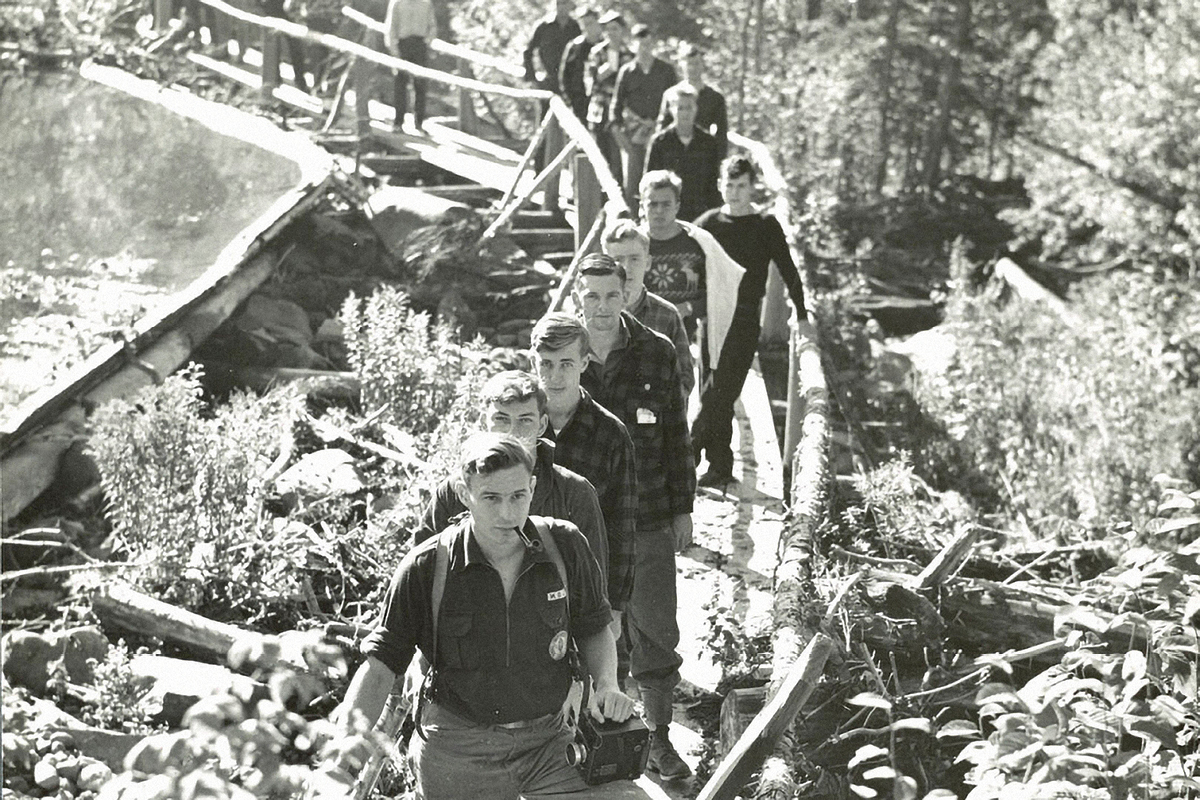
HITTING THE TRAIL: Dartmouth Outing Club trip leader Roger Brown leads new Dartmouth College students on a hike in 1946. The club’s First-Year Trips date back to the 1930s.
History and Connections
Traditions are the objects, beliefs, events, and practices within a campus community. They're connections "to the past, to people, to place," writes folklorist Simon Bronner, author of the 2011 book Campus Traditions and dean of the College of General Studies at the University of Wisconsin-Milwaukee, U.S.
Traditions take many forms, from festivals to fight songs sung at sporting events to late-night exam week feasts. Some date back centuries (graduation ceremonies were first held in 12th century Europe) or decades, like the first U.S. homecoming football games in the 1910s. Activities may vary, but they’re often anchored in an institution’s organizational culture—its shared values and environment, points out Maria Gallo, founder and principal researcher at Keep in Touch Education. She’s worked with universities in Canada and across Europe and says “the importance of ritual and tradition are just the same” at institutions older and newer, around the globe.
Today, colleges and universities often take an active role in organizing events around traditions—but that's a shift that's happened only in the last 40 years or so, says Bronner, spurred by changing perspectives within higher education on student activities and the growth of student affairs divisions. In Campus Traditions, Bronner focuses instead on the organic traditions expressed and driven by students. Campuses can be "hotbeds for [these] expressive traditions," he explains, because college (especially in the U.S.) is regarded as a time of transition and transformation: a foundational period for establishing relationships. Traditions and rituals help students grapple with that change and find a sense of belonging.
Smaller liberal arts schools often emphasize this sense of community, but it’s just as important at larger institutions too. Students “can get lost in that universe. They need connection to a community to make the university smaller,” Bronner says. “Folklore and traditions are an important part of that.”
What sets traditions apart from, say, habits or customs, are that they’re regarded with symbolic importance, and they emphasize “intergenerational connection,” Bronner says. That is, they’re passed on, creating common experiences that bridge past, present, and future.
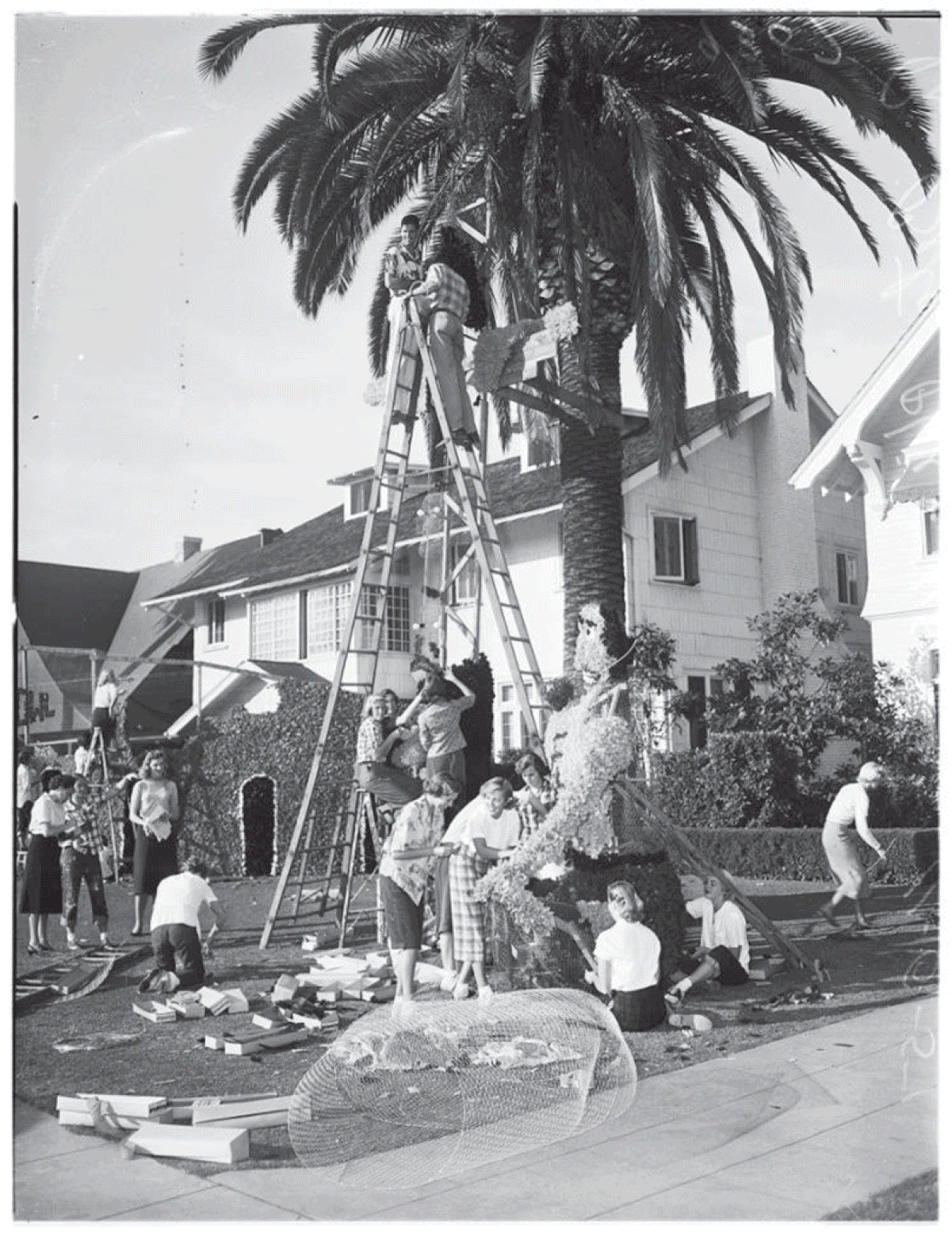
Traditions and Alumni Identity
For advancement, traditions drive institutional affinity and engagement for alumni. Some campus traditions (like Dartmouth’s orientation) are student-only experiences that live on for alumni as memories and touch points. But other traditional activities involve broader university communities. Take, for instance, homecoming at the University of Southern California—where tradition is a “bedrock,” says Danielle E. Harvey, assistant vice president for alumni relations.
“I call homecoming the great equalizer, because no matter who you are, how you identified, or how you experienced USC, if you’re able you’re most likely going to come back for homecoming,” she says. Since 1924, the fall homecoming weekend has drawn thousands of participants to Los Angeles for a football game, tailgating, marching band performances, and more.
“At the core, it’s about coming back, reuniting, and paying it forward,” Harvey says. “We say: ‘This was special to me, special to you, and special to all of us.’”
Just as traditions help students shape their identities, traditions can also give graduates a sense of what Gallo calls “alumni identity.” In her research on alumni relationship-building, Gallo describes how alumni have to internalize being an alumnus/alumna as part of who they are, then they can take action: “The more engaged that you are, the more you have this sense of identity, the more the traditions and rituals you’re involved in, the more likely you are to give your service and philanthropically.”
Data back this up. When Fort Hays State University and Ball State University researchers examined how traditions and rituals impact alumni in 2015, they found that “alumni who perceive that the university has valued, well-established traditions and rituals exhibit stronger behaviors associated with loyalty.” Those include giving philanthropically, encouraging family members to enroll, or getting involved in an alumni group.
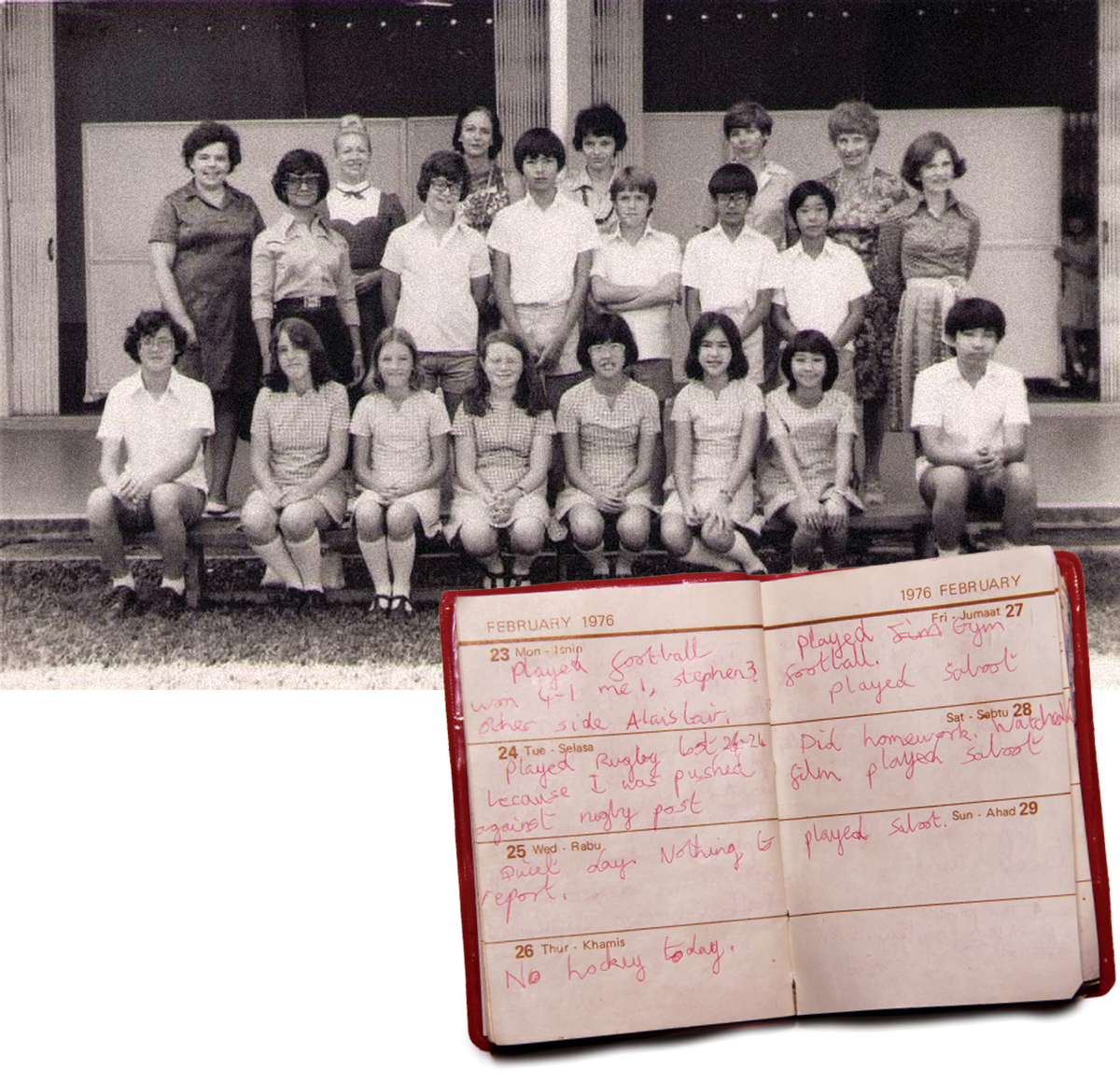
SCHOOL DAYS: The Alice Smith School documents its history with photos and memorabilia, like this group photo and student planner from 1976.
Taking Traditions Online
But even as they celebrate history, traditions—like the institutions and communities that forge them—grow and change. Teams, institutions, alumni, and students made monumental shifts to keep traditions alive in 2020 and 2021 during the COVID-19 pandemic. Around the globe, celebrations that weren’t cancelled went online—including USC’s 2020 homecoming.
For the Alice Smith School in Kuala Lumpur, Malaysia, the pandemic challenged staff to rethink traditional ways to engage alumni. Founded in 1946, the K-12 international school’s heritage is vitally important, says Susan Wan, director of development. When alumni come back to the school, they typically start their visits in a mini museum on campus filled with photos and memorabilia. It’s called the Ad Astra Room for the Latin school motto “Sic Itur Ad Astra” (“in this way you shall reach the stars”). That “puts alumni in the mood for sharing and encourages them to tell their stories,” Wan says.
But during the pandemic, the school couldn’t host its in-person alumni gatherings, so staff planned virtual reunions by age group. So many alumni shared photos and memories that the events (planned for just 45 minutes) lasted for two hours.
“We were very surprised to see that alumni around the globe—some who woke up at five in the morning their time—joined us,” Wan says. “These are alumni we’d never have been able to reach with an in-person reunion.”
Like the Alice Smith School, USC retooled its traditional alumni activities (happy hours or in-person networking) during COVID-19 to deliver webinars from expert researchers. That speaks to how the pandemic compelled teams to examine the value of traditions and customary programs, Harvey says.
“What we do—sometimes with little awareness, but when we’re at our best we do it intentionally—is continuously ask ourselves: What’s important about this? Is it adding value, and are people getting out of it what we intended?” she says.
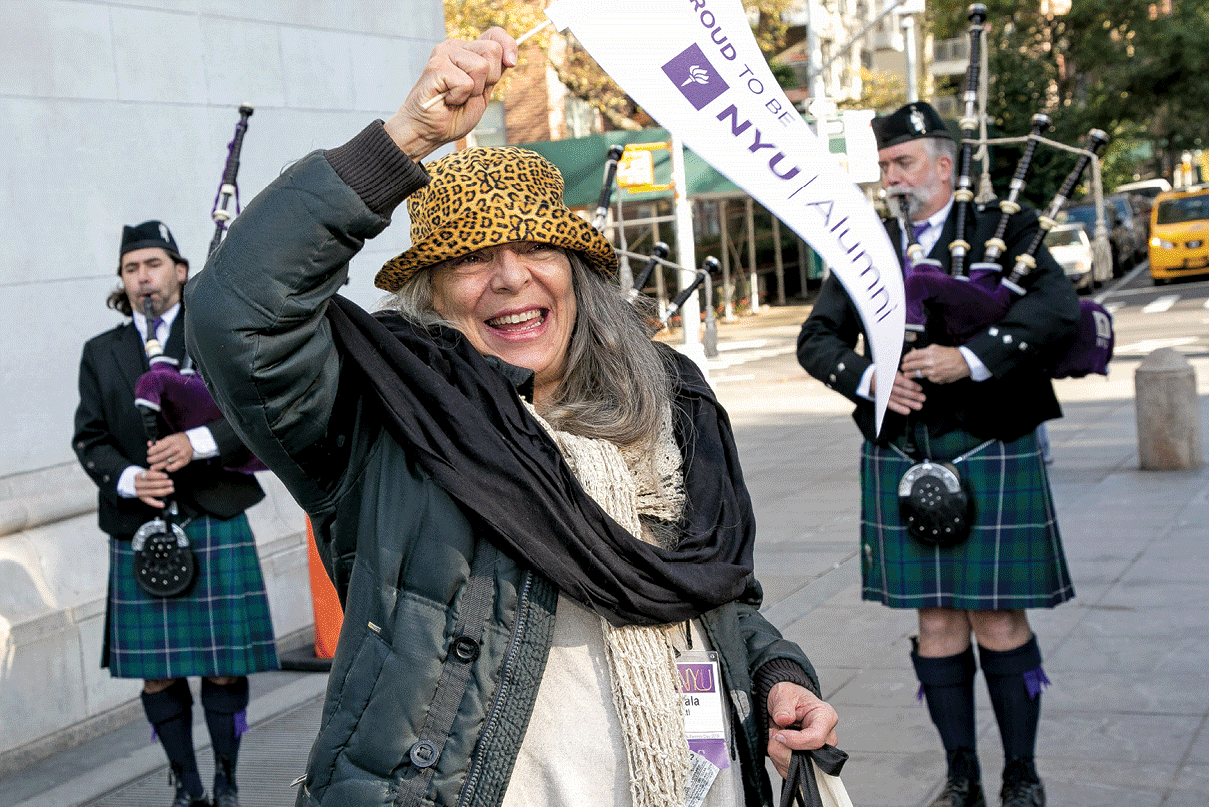
Relevance and Reaching New Alumni Audiences
Beyond assessing the value of traditional activities, advancement teams are also continually exploring how to keep traditions relevant for new generations or different audiences of alumni. As Harvey puts it for her team: “If we’re not growing and evolving, ultimately we’re going to get left [behind] or [our activities] are not going to be relevant anymore.”
For some standing traditions, staying relevant means freshening up activities with new twists. In 2019, when New York University in New York City set out to boost attendance at its Alumni Day, it turned to alumni volunteers to reshape the tradition as Alumni Weekend. Based on alumni input, NYU both simplified the event schedule and spiced up activities to appeal to its entrepreneurial, artistic alumni base, like hosting a talent show and a closing party at a historic restaurant. That demonstrates how, for annual events, teams walk a fine line with predictability and innovation, says Gallo.
“You want to reach a point where traditions are being honored, but at the same time you also want to keep activities fresh,” she says.
Other times, advancement teams tweak traditions to reach specific alumni populations. That was Durham University’s goal with its Golden Anniversary Reunion. The English university organizes a variety of traditional reunions for graduates, but wanted to rekindle ties with a particular subset of alumni: those who had graduated 50 years ago. In 2016, it added a new twist to its fall commencement ceremony held in Durham Cathedral, inviting alumni who graduated in 1966 to participate and have tea with university leaders. Some of these alumni hadn’t been back to visit in decades. In 2020 the event won a gold CASE Circle of Excellence Award, and according to awards materials, 65% of participants said it strengthened their ties to Durham; a quarter volunteered for future activities like mentoring.
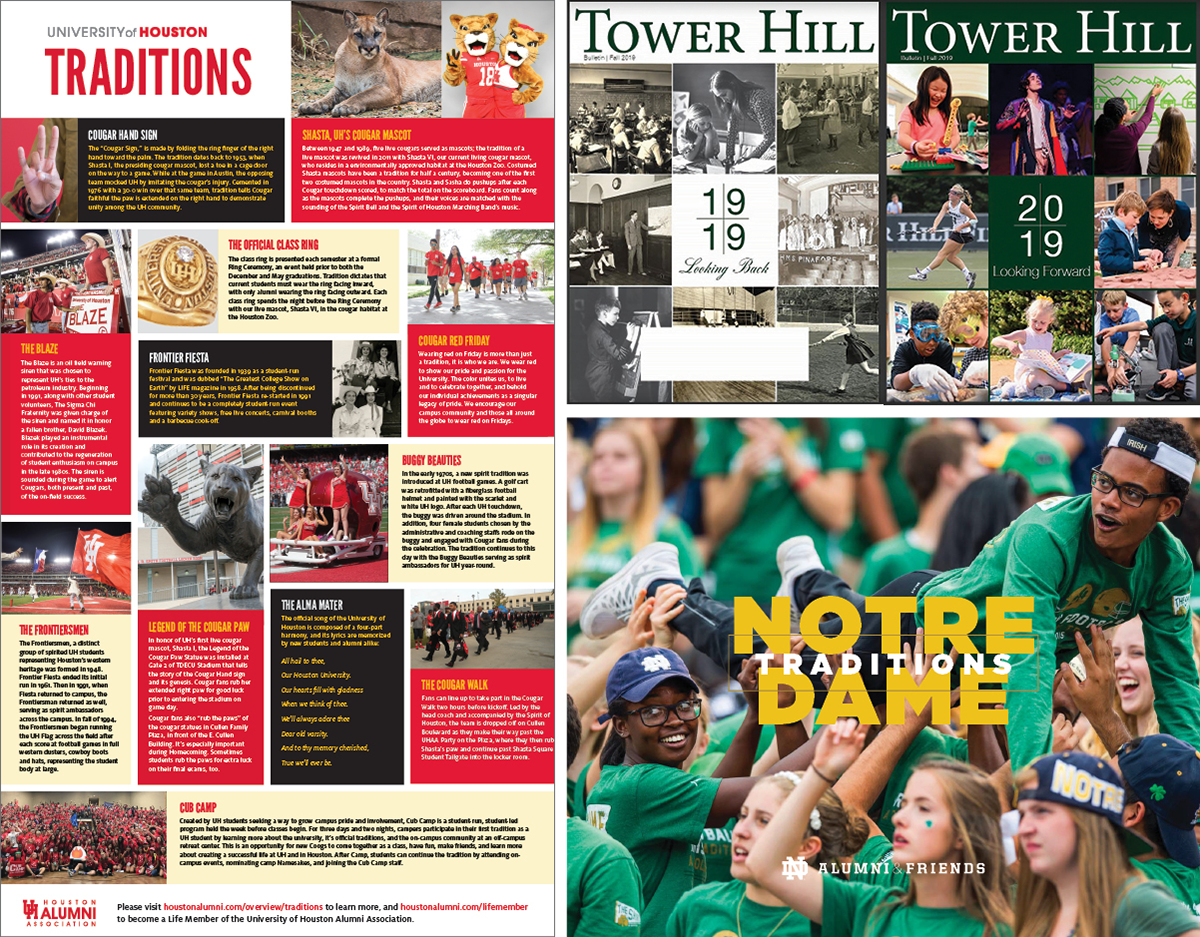
LOOKING BACK, LOOKING FORWARD: Institutions chronicle traditions in magazines (Tower Hill School), posters (the University of Houston), and books (the University of Notre Dame).
Reexamining Traditions: Sensitivity and Safety
But traditions can have a darker side. Some (including pranks or hazing rituals) get curbed by universities for safety reasons. Bonfires are a common example. A 1999 collapse of the popular Aggie Bonfire at Texas A&M University killed 12 people, and both Dartmouth and USC have made changes to their annual bonfires.
Beyond that, institutions in recent years have also grappled with updating or rethinking traditions to make them more inclusive. In the wake of 2020’s protests following the murder of George Floyd—and even before that—institutions around the globe have come under fire for traditional songs, cheers, mascots, and events that are racist or insensitive.
Dartmouth is one institution that’s reexamined its traditions in this context. The campus was founded as a Native American school and sits on Abenaki Native American land. The college has grappled with its origin story and complicated past, says Palmer, including changing its mascot from the Indians to the Big Green.
“Traditions evolve over time,” he says. “There’s no question that Dartmouth is a very different place than it was 50 years ago and that it’s changed for the better.”
Ultimately, campus traditions can benefit from student and alumni turnover. More diverse student bodies and generations of alumni can revisit traditions with fresh eyes, says Bronner, and add new ones like Diwali and Chinese New Year celebrations, which he says are becoming much more common.
That’s not to say the change process is simple: Dartmouth has had “robust” discussions about change, says Palmer, and alumni can have passionate opinions. Whatever shift in traditions an institution is undergoing, the key is involving students, alumni, and community voices in the change process. Harvey calls this the “necessary steps of listening, and connecting that to where we are and where we’re going.”
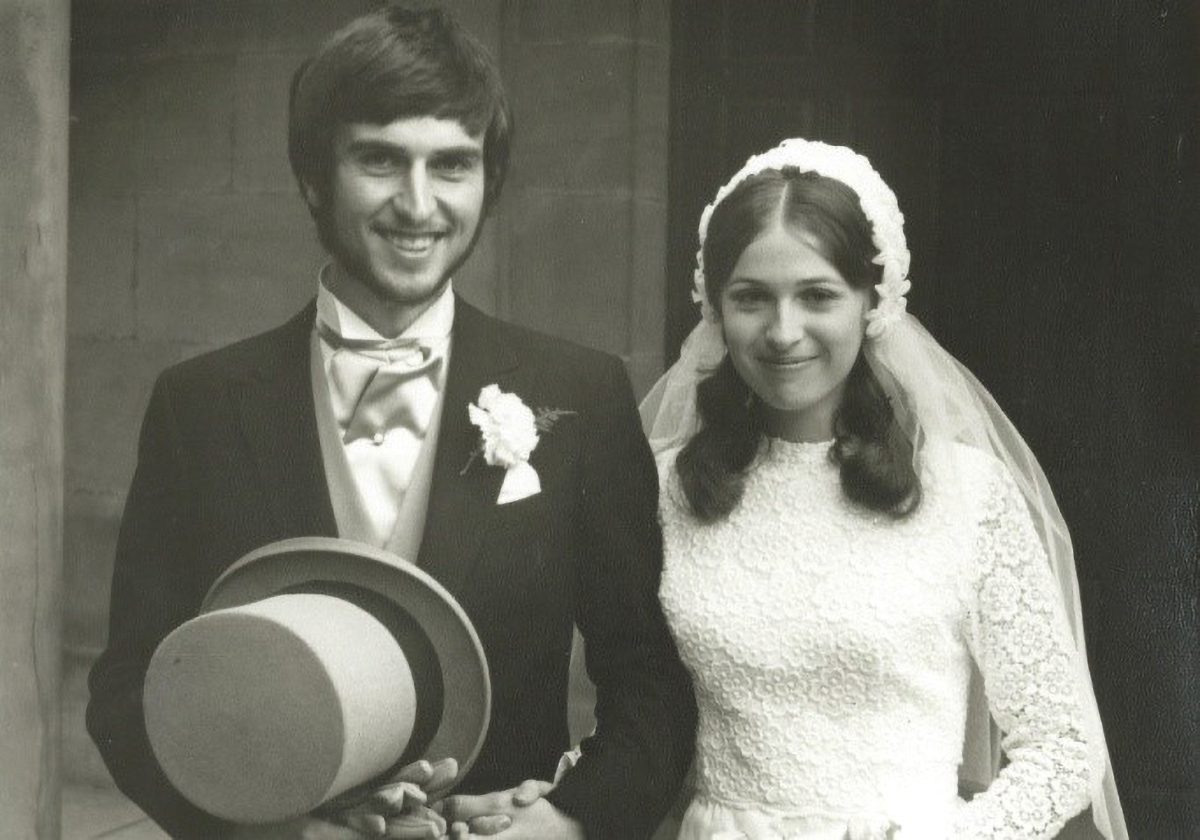
50 YEARS OF MEMORIES: For their Golden Anniversary in 2020, members of the Durham University class of 1970 shared stories about their studies and lifelong relationships.
Passing on Traditions
Traditions—old, new, or reinvented—need transmission to endure. Storytelling helps communities keep traditions alive, and advancement teams have found a variety of creative ways to do that. The University of Notre Dame in Indiana created a 50-page traditions handbook in 2019 for students and alumni. For its 2019 centennial, Tower Hill School in Wilmington, Delaware, created an innovative double cover flip issue of magazine with “Looking Back” and “Looking Forward” sections. The University of Houston in Texas chronicled its traditions (like wearing the color red on Fridays) in a poster.
Digital storytelling in particular can keep far-flung alumni dialed into traditions. The University of Michigan’s Heritage Project explores the stories behind the university’s traditions, including its May Festival, its blue and gold color scheme, and “Go Blue” cheer. Launched in 2013, the project’s goal was to shed new light on traditions and explore untold tales. The project won a 2020 gold Circle of Excellence Award for writing, with judges lauding the “immersive” storytelling for resonating well with readers.
Stories and memories touch Alice Smith School alumni, too. On the school website and social media accounts, Wan and staff regularly share photos and “throwback Thursday” content of campus activities, which generate the highest engagement of all posts.
“We share things by decade,” Wan says. “When our alumni are actively engaging and talking online, this is how you keep the heritage alive and keep them connected.”
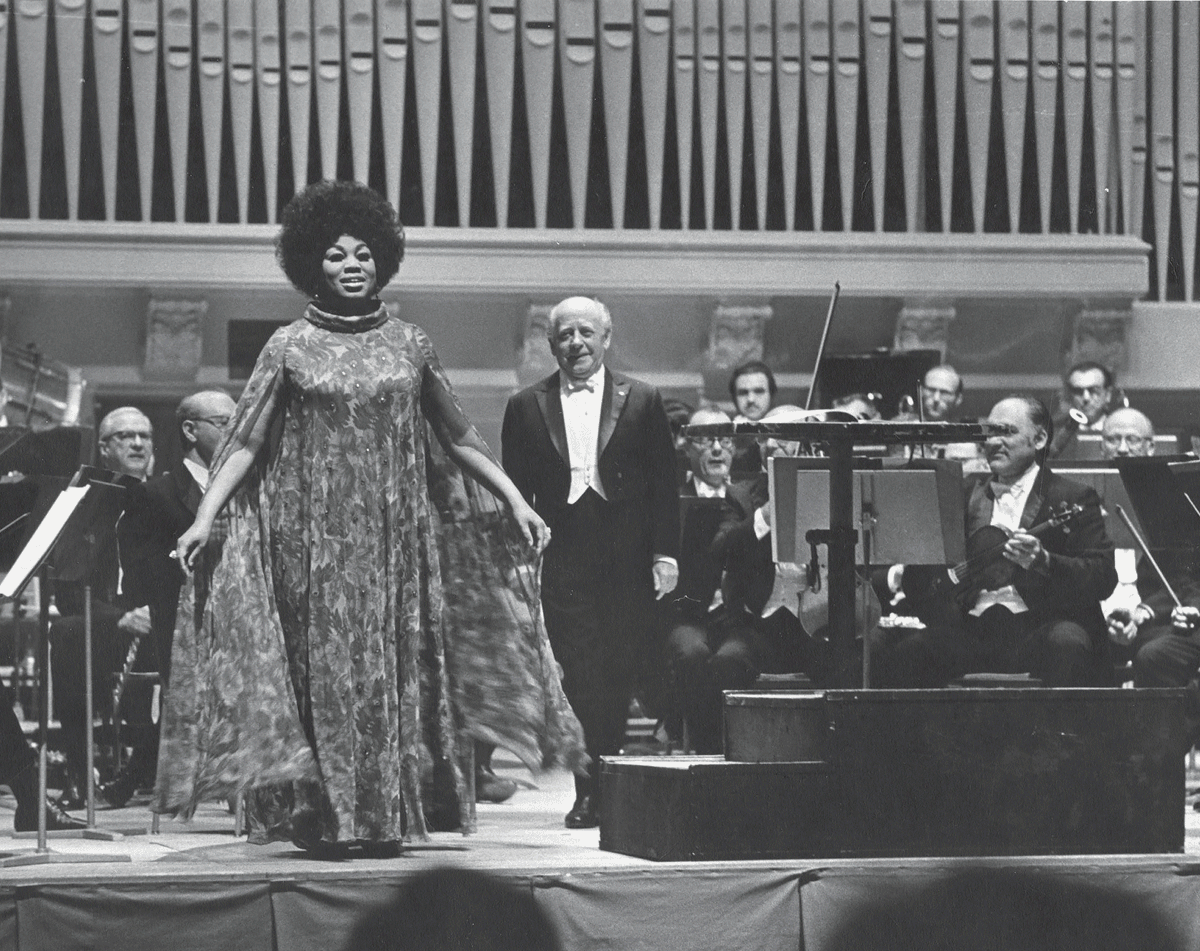
Looking Ahead
Back at Dartmouth, students weathering the pandemic on campus in 2020 and 2021 couldn’t partake in many traditional activities—but they could hit the ice. The college built two ice skating rinks on the campus green and fire pits for students to safely socialize outdoors amid COVID-19. Palmer wonders if the skating rinks will become a regular feature on campus next year and beyond. It raises the question: What new traditions are being nurtured right now at campuses around the world?
Looking ahead to a post-pandemic future, traditions may be at a crossroads.
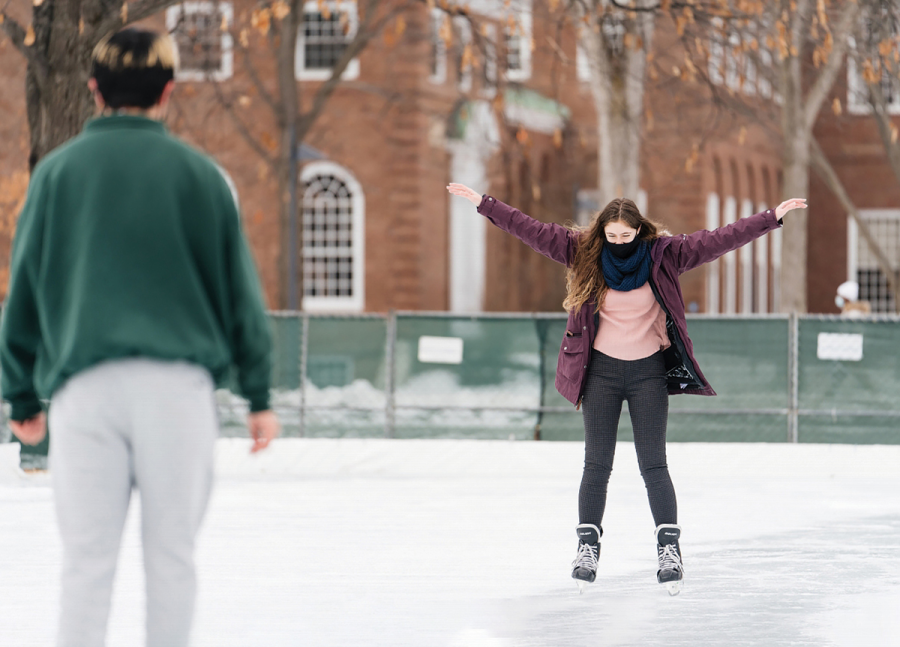
WEATHERING WINTER: Amid COVID-19, Dartmouth College built two skating rinks in January 2021 so students could safely socialize outdoors.
“We did all these novel things because we had to in lockdown. Are we going to abandon tradition again, or do we integrate them into this new online normal?” Gallo asks. “Now we have this opportunity to provide tradition and ritual, as we can, online. That’s a really exciting prospect.”
Now that Alice Smith School has engaged alumni around the world for virtual reunions, Wan sees a hybrid model for engagement as the future. As a dean committed to student-centered community-building, Bronner says he hopes in-person experiences don’t fade away—but he also knows higher education faces myriad challenges ahead with budgets and enrollment. There are no easy answers. Institutions will likely continue to face balancing acts with traditions: reinvention and history, creativity and customs, change and value.
But the traditions that endure will be the ones that spark the strongest community ties: the ones that honor the past, offer value now, and can change (if and when needed) in the future.
Campus Traditions Timeline
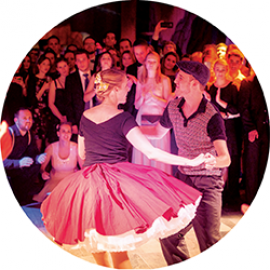
1880s
ETH Zürich, the Swiss Federal Institute of Technology, begins hosting an annual party that would come to be known as Polyball, the largest decorated ball in Europe.

1898
Michigan’s Hope College begins the Pull, an annual tug-of-war contest. The longest pull lasted for three hours and 31 minutes.

Circa 1900
Students at Cornell University in New York host a College of Architecture Day celebration. By the 1950s, it evolves into Dragon Day, in which architecture students build a massive dragon and parade it across campus.
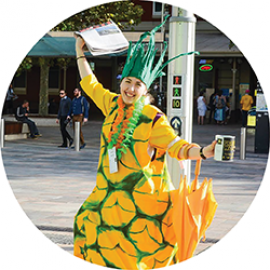
1931
University of Western Australia students publish a satirical newspaper, which eventually becomes the PROSH paper. Today students gather in Perth on PROSH Day to hand out papers for charitable donations
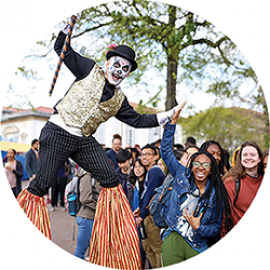
1941
Emory University in Atlanta hosts its inaugural Dooley’s Frolics, in honor of the school’s unofficial skeleton mascot. Dooley’s Week continues today with concerts and activities.

1973
Pennsylvania State University hosts its first THON, an annual dance marathon that has since raised more than US$180 million for charity.

2004
Students at South Africa’s University of Witwatersrand attempt to break the record for world’s largest pillow fight. The pillow fight became a tradition.
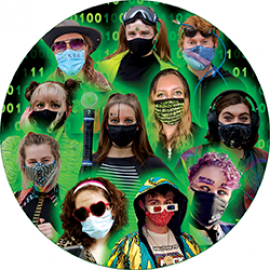
2021
Wisconsin’s Lawrence University takes its 56th annual Great Midwest Trivia Challenge completely virtual.
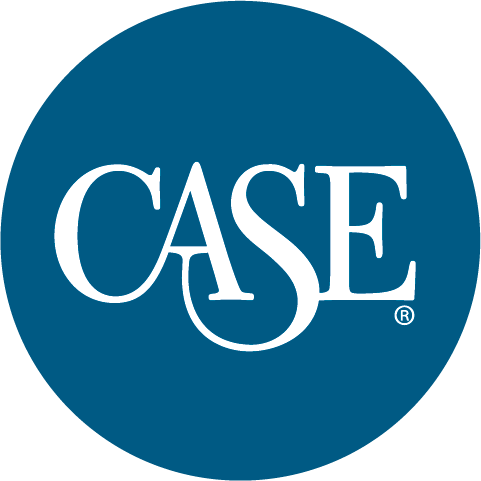
There’s more inspiration to unlock when you become a full CASE member. Meet with a CASE membership specialist to get your first year for $825, that’s up to 55% savings.
About the author(s)
Meredith Barnett is the Managing Editor at CASE.
Tags
Article appears in:

May - June 2021
Community, Celebration, and Change: How traditions bridge past, present, and future. Plus, understanding how equity is central to institutions’ pursuit of social and racial justice, engaging alumni of color, and investing in alumni during trying times.

